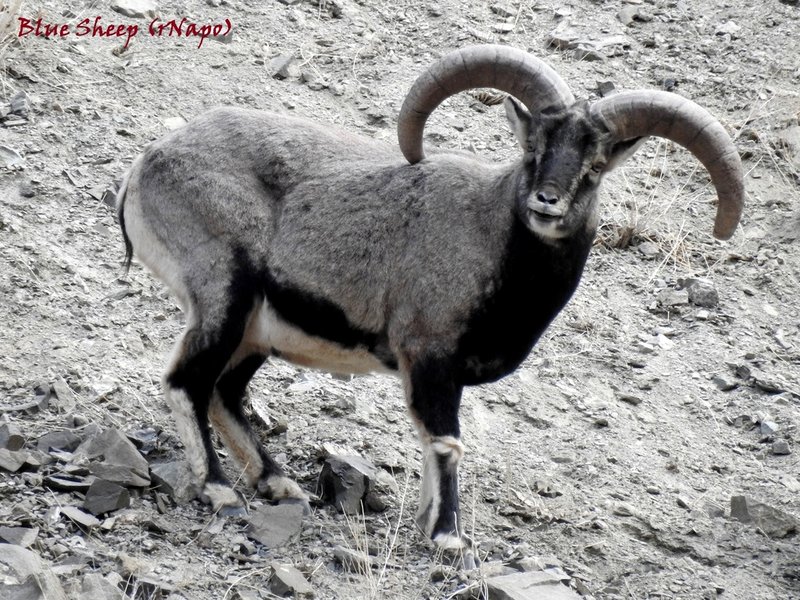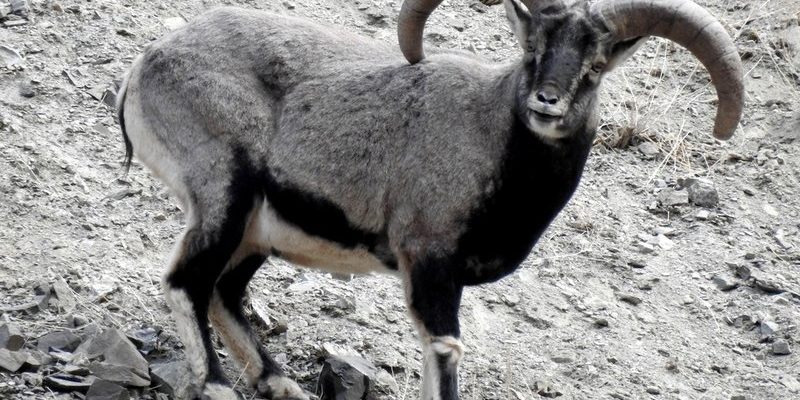
The Bharal, commonly known as the Blue Sheep, is a stunning and agile creature that calls the rugged mountains of Central and South Asia its home. Imagine a graceful athlete leaping over rocky slopes; that’s the Bharal for you. These unique animals are known for their striking blue-gray fur and impressive horns, which can grow to impressive lengths in males. But there’s more to them than just their good looks!
In this article, we’ll explore everything about the Bharal, from their habitat and diet to their fascinating behaviors and conservation status. Whether you’re an animal enthusiast or just curious about wildlife, this deep dive will give you a thorough understanding of the Blue Sheep and its role in the natural world.
Physical Characteristics
The Bharal stands out with its remarkable appearance. They typically weigh between 90 and 200 pounds and have a body length of about 4 to 5.5 feet. Males are generally larger than females, sporting longer horns that can reach up to 3 feet in length. These horns spiral outward and backward, creating a striking silhouette against the backdrop of the Himalayas.
As for their fur, the Blue Sheep has a soft, thick coat that changes color with the seasons. In the winter, their fur turns a deeper blue-gray, providing excellent camouflage against the rocky cliffs and snow. This adaptation helps them evade predators like snow leopards. The Bharal’s legs are long and strong, designed for navigating steep, rocky terrains with ease.
Additionally, their unique eye placement allows them to see predators from various angles, making them highly vigilant animals. This poor vision is often compensated by the strong social bonds they form within their groups, alerting each other to danger.
Habitat and Range
You might be surprised to learn that the Bharal can thrive in some of the harshest environments on Earth. These animals inhabit high-altitude areas, primarily between 10,000 and 20,000 feet above sea level, across the Himalayas, Tibetan Plateau, and parts of northern India, Nepal, and Bhutan. The steep, rocky slopes and rugged cliffs are perfect for their incredible climbing abilities.
Their habitat is characterized by cold, dry conditions with sparse vegetation, mainly consisting of grasses, shrubs, and alpine plants. The Bharal has adapted to these harsh climates by developing a keen sense of balance and agility, allowing them to traverse precarious paths and evade predators. During the warmer months, they venture to higher elevations, where they find more abundant food sources.
Interestingly, these animals are social creatures. They often form herds, especially during the winter months, gathering in groups of 20 to 100 individuals. This not only helps them stay warm but also provides safety in numbers against potential threats.
Diet and Feeding Behavior
The Bharal is primarily herbivorous, with a diet that includes a variety of grasses, herbs, and shrubs found in their mountainous habitats. They are particularly adept at grazing on tough plants that thrive in rocky soils. During late spring and summer, their diet is supplemented with tender shoots and leaves, which help them build energy reserves for the harsh winter months ahead.
It’s fascinating to watch how these animals feed. With their strong, nimble legs, they can maneuver across rocky ledges, reaching for plants that are often inaccessible to other herbivores. They tend to be selective eaters, preferring high-nutrient plants, which is vital for their survival in such a demanding environment.
When feeding in groups, the Bharal utilizes a strategy of communal grazing, where one or two individuals keep watch for predators while others eat. This clever tactic not only maximizes feeding time but also enhances their chances of survival in the wild. They are more than just agile; they are smart and adaptable.
Behavior and Social Structure
The social structure of the Bharal is quite interesting. They live in herds that typically consist of females and their young, led by a dominant female. Males tend to be more solitary, only joining the group during the mating season. This hierarchy helps maintain order and increases the overall safety of the herd.
During the mating season, males will engage in vigorous displays, including clashing their impressive horns against one another to establish dominance. These displays can be quite a spectacle, drawing watchers from miles around. However, it’s not just brute strength that determines hierarchy; cunning and strategy play important roles, too.
The Bharal communicates using a variety of vocalizations, including bleats and grunts, especially when warning each other of danger. Their keen senses and ability to read body language within the herd are crucial for maintaining their bonds and ensuring everyone’s safety.
Reproduction and Lifespan
During the mating season, which typically occurs in late autumn, male Bharals display their prowess through a series of ritualized fights and displays of strength. These confrontations can look fierce, but they often end without serious injury, as the goal is to establish dominance rather than to harm one another. After this competitive period, females give birth to a single lamb after a gestation period of around 5 to 6 months.
Newborn Bharal lambs weigh about 10 to 15 pounds and are able to stand and walk shortly after birth. This quick adaptation is critical for survival in their high-altitude habitats, where predators are ever-present. Mothers are highly protective of their young, often keeping them hidden in rocky crevices until they are strong enough to join the herd.
In the wild, Bharals can live up to 10-12 years, although their lifespan may be shorter in the presence of predators or harsh environmental conditions. In captivity, they can live even longer, benefiting from regular veterinary care and a controlled diet.
Conservation Status
Despite their resilience, the Bharal faces several threats that put their populations at risk. Habitat loss due to human encroachment, climate change, and poaching are significant factors contributing to their declining numbers. Their natural habitat is increasingly threatened by industrial activities, agriculture, and tourism, leading to fragmentation of their populations.
Conservation efforts are in place to protect these unique animals, including establishing protected areas and promoting sustainable tourism practices. Organizations are working to raise awareness about the importance of preserving the Bharal’s habitat and the delicate balance of the ecosystems they inhabit.
As individuals, we can contribute to these efforts by supporting wildlife conservation initiatives and promoting responsible tourism practices. Every small action counts in the fight to protect the Bharal and its mountain home.
| Common Name | Bharal (Blue Sheep) |
| Scientific Name | Pseudois nayaur |
| Habitat | Mountainous regions of Central and South Asia |
| Size | 4 to 5.5 feet in length |
| Weight | 90 to 200 pounds |
| Lifespan | 10 to 12 years in the wild |
| Diet | Herbivorous, feeding on grasses and shrubs |
| Population Trends | Declining due to habitat loss and poaching |
FAQ
What are the main predators of the Bharal?
The Bharal faces predation primarily from snow leopards and wolves. These skilled hunters are adept at navigating the rocky terrains where Bharals reside. The Bharal’s agility and social structure help them evade dangers, but they must always be on high alert.
Are Bharals social animals?
Yes, Bharals are quite social and typically form herds. These groups can range from a small number of individuals to larger gatherings of up to 100. Their social structure helps them ensure safety and stability within the group, especially when grazing or resting.
How do Bharals adapt to high altitudes?
Bharals have several adaptations for survival at high altitudes. They have specialized lungs that enable them to breathe efficiently in low-oxygen environments and a strong sense of balance for navigating steep terrains. Their thick fur also protects them from the extreme cold.
What do Bharals eat in the wild?
Bharals primarily eat grasses, shrubs, and herbs found in their mountain habitats. During different seasons, they will adjust their diet based on the available vegetation, ensuring they get the nutrients they need to thrive in harsh conditions.
How many young do Bharals have at a time?
Typically, female Bharals give birth to a single lamb each year. Twins are rare. The young are born in the spring, which gives them a better chance of survival, as the warmer weather provides more abundant food sources for nursing mothers.
Are Bharals endangered?
While not classified as critically endangered, the Bharal’s population is declining due to habitat loss and poaching. Conservation efforts are being implemented to protect their natural habitats and promote sustainable practices to ensure their survival.
What is the significance of the Bharal in local culture?
The Bharal holds cultural significance in several regions where they are found. In some communities, they are considered a symbol of agility and strength, reflecting the harsh but majestic environments they inhabit. They are also an integral part of the ecosystem, contributing to the balance of mountain life.
Can Bharals be kept in captivity?
While Bharals can be kept in captivity, they require specific conditions that mimic their natural habitat. This includes ample space for movement and access to a diet that resembles their wild forage. Zoos and reserves aim to educate the public about the species and participate in breeding programs for conservation.
How can I help protect Bharals?
Getting involved in wildlife conservation initiatives, supporting organizations that work to protect Bharals and their habitats, and promoting sustainable tourism can all contribute to their protection. Being mindful of your ecological footprint is crucial in preserving the natural environments these animals depend on.
What time of year is best for observing Bharals in the wild?
The best time to observe Bharals in the wild is during the spring and summer months when they are most active and visible. During this time, they venture to lower altitudes for grazing, making them easier to spot. Early mornings or late afternoons are prime times for wildlife observation.

